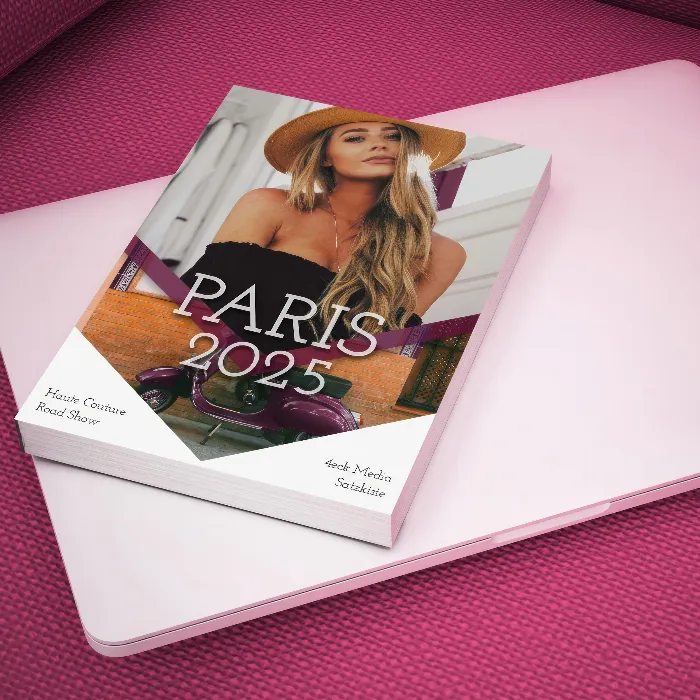Placing and managing graphics and images in Adobe InDesign is crucial for high-quality document creation. This guide shows you how to insert images into your InDesign document, monitor their status, and achieve optimal image quality for printing. In addition to technical aspects, you will also learn important tips and tricks for the efficient use of the program.
Key Insights
- It is important not to use images embedded in InDesign, but to keep them linked to optimize storage space.
- Use the Links panel to manage all graphics and images in your document.
- Pay special attention to the resolution of the images to ensure printable quality.
Step-by-Step Guide
Importing Images
To place images in your InDesign document, open the "File" menu and select "Place". Here you can choose the desired graphic files and insert them into your document. Make sure to import all necessary images at the beginning.

Directly in the cursor, you now see a preview image of the selected graphic element. If you simply click it into the document, the image will be placed at its original size. You can also draw a frame to scale the image to a specific size.

Frame and Image Adjustment
In InDesign, editing images works similarly to framing photos. You have a frame into which the image is placed, and you can edit both the image and the frame independently. Make sure to hold down the Shift key while enlarging the image to maintain its proportions.
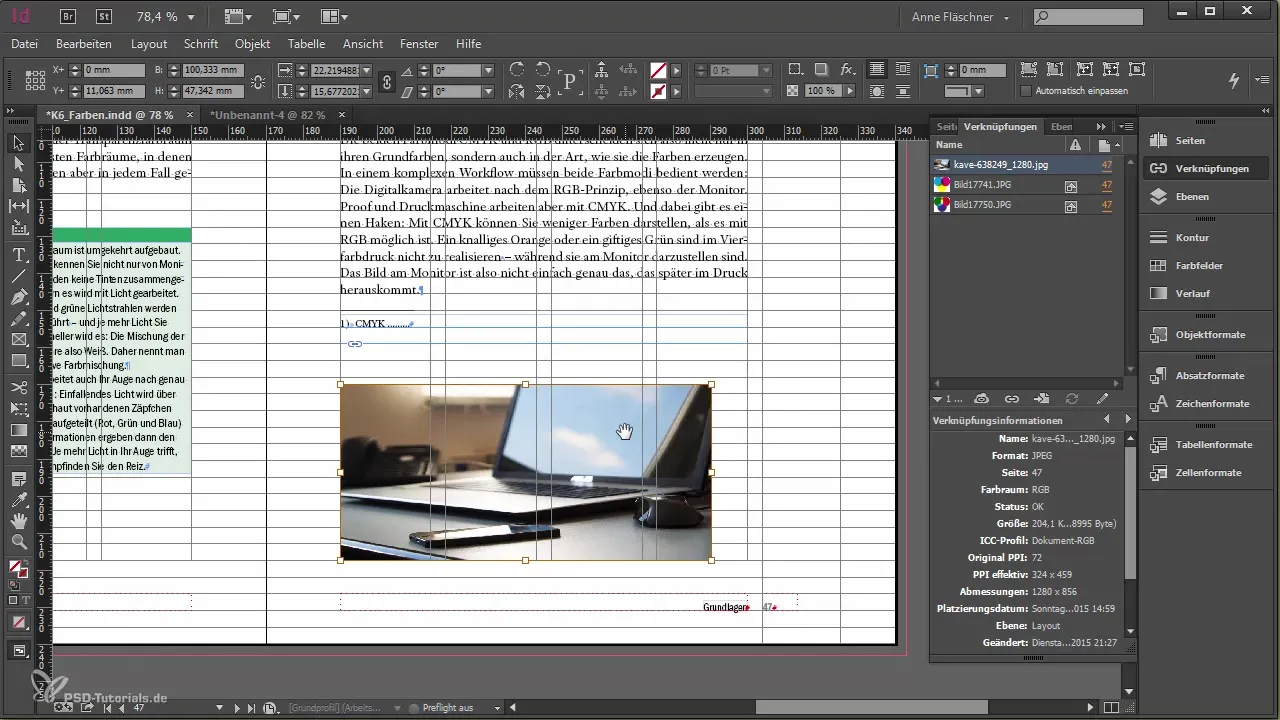
By double-clicking on the frame, you can access the image content. Again, hold down the Control key and the Shift key while resizing the image to maintain proportions.
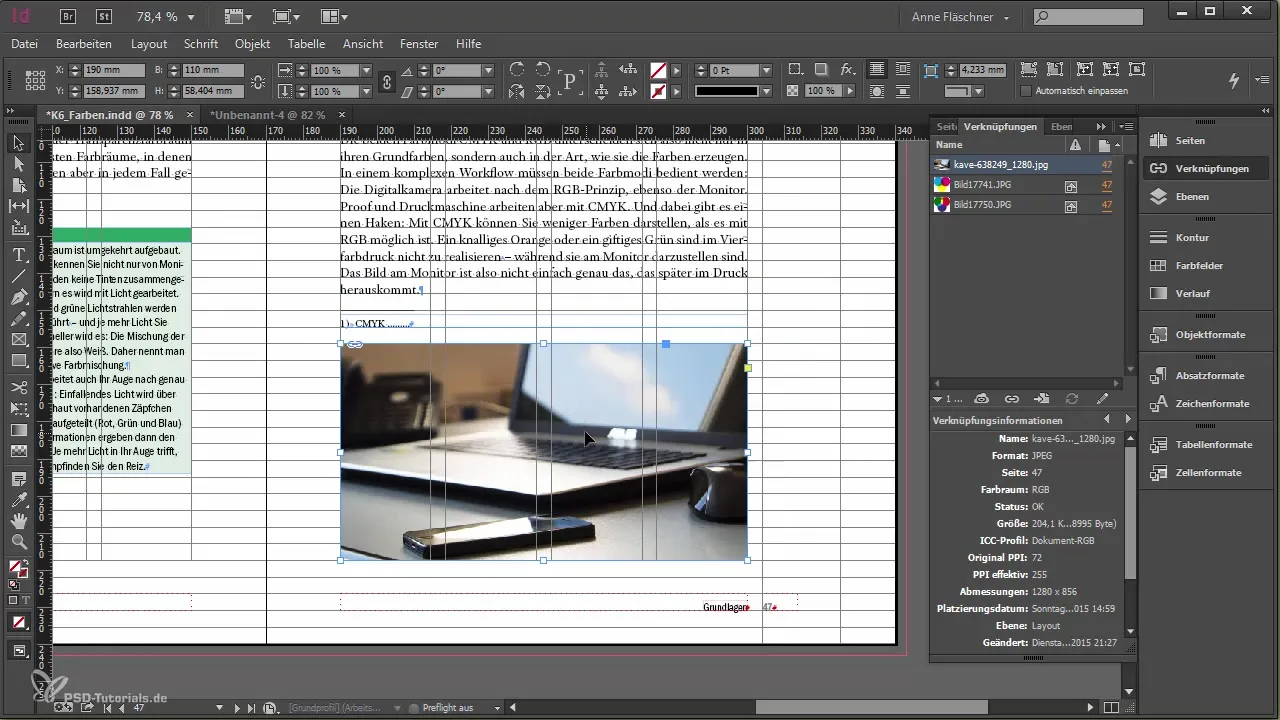
Setting Image Size
If you need a specific width for an image, you can directly enter the measurements into the scaling percentage values. Instead of just changing the size via the frame, there is an option to enter precise millimeter values, so that the entire image, including its content, is scaled accordingly.
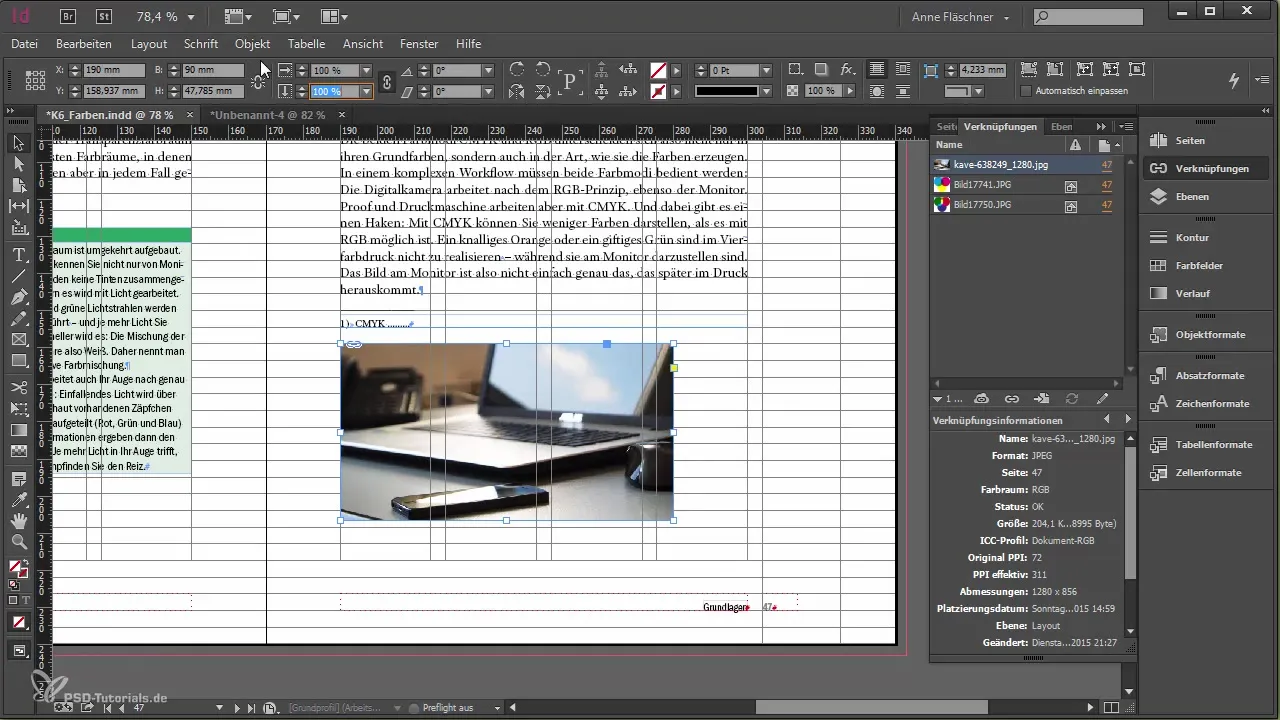
Using the Links Panel
The Links panel is an extremely useful tool in InDesign. Here you can see all the images placed in your document. Make sure that the images are always displayed as linked here, so you can save space.
Through the Links panel, you can not only check the resolution of the images but also copy the file name or retrieve the location of the image. To do this, simply right-click on the file name.
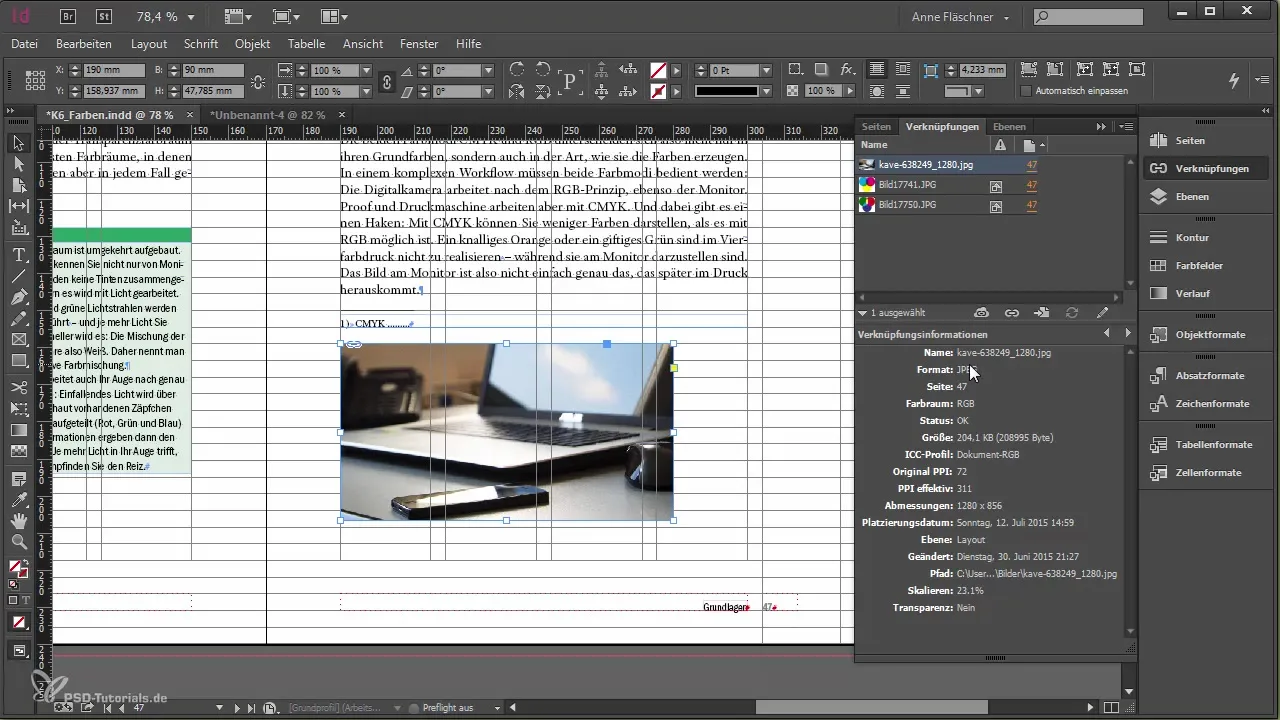
Automatically Replacing Images
If you frequently work with images, it can be time-consuming to replace them manually. With the "Relink" function, you can quickly replace all images that have the same file name with a new file version. This is especially useful when working with revised files.
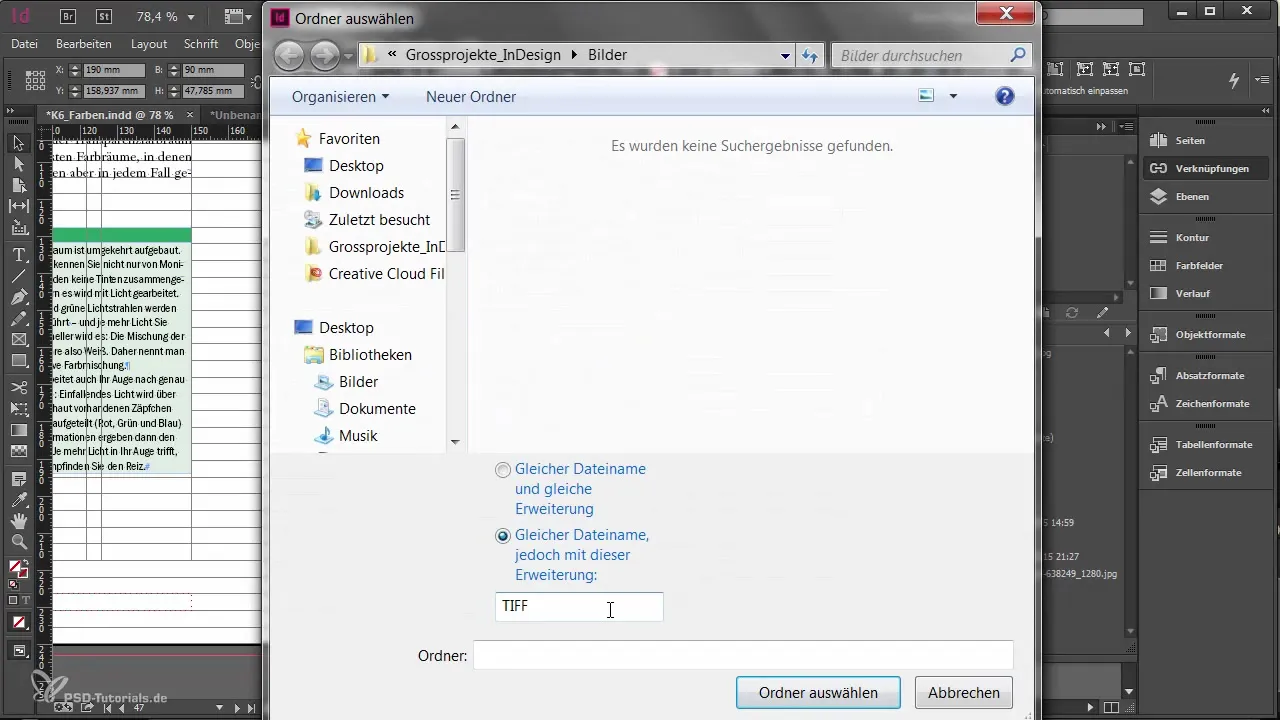
Editing Images
If you want to change an image used in the document, you can do so directly from InDesign. By using the "Edit Original" option, you open the image in the corresponding graphics program (e.g., Photoshop), make your changes, and save the file. InDesign will then automatically update the image.
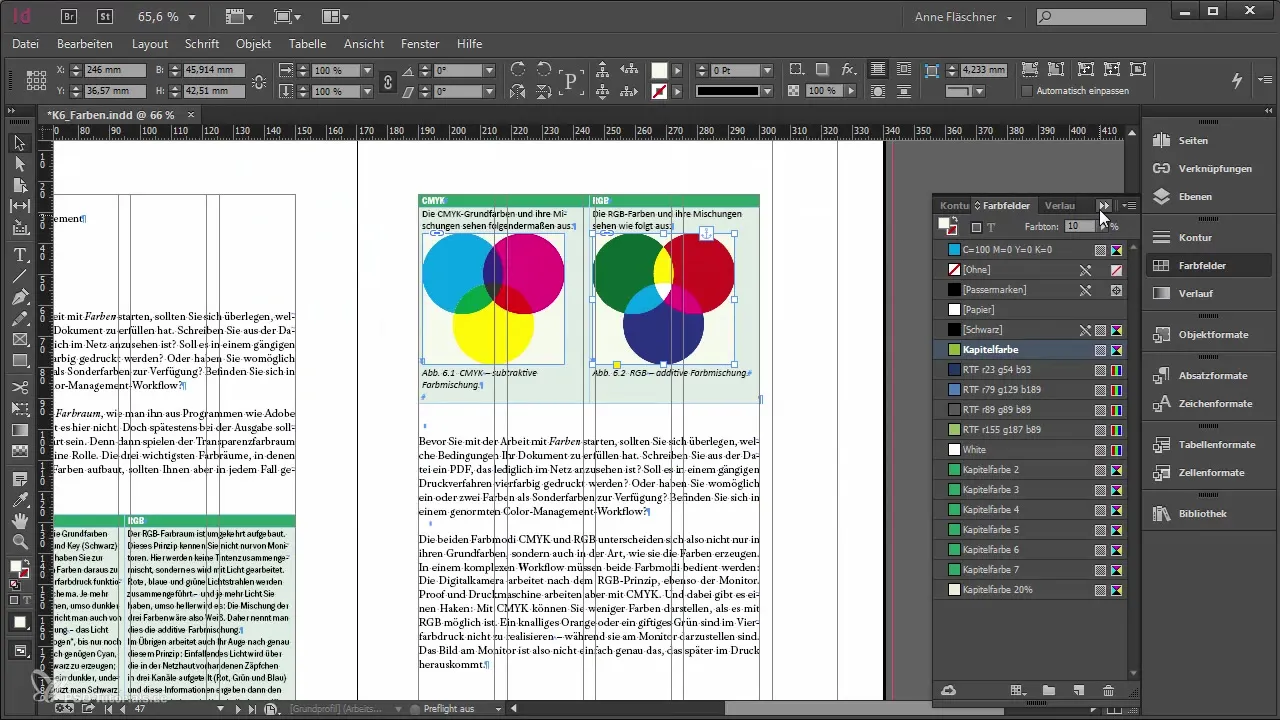
Anchoring Images in Text
When you insert images into text, it is advisable to anchor them in the text. This means that the image moves along with the text when you edit the text. This function ensures that the layout remains consistent.
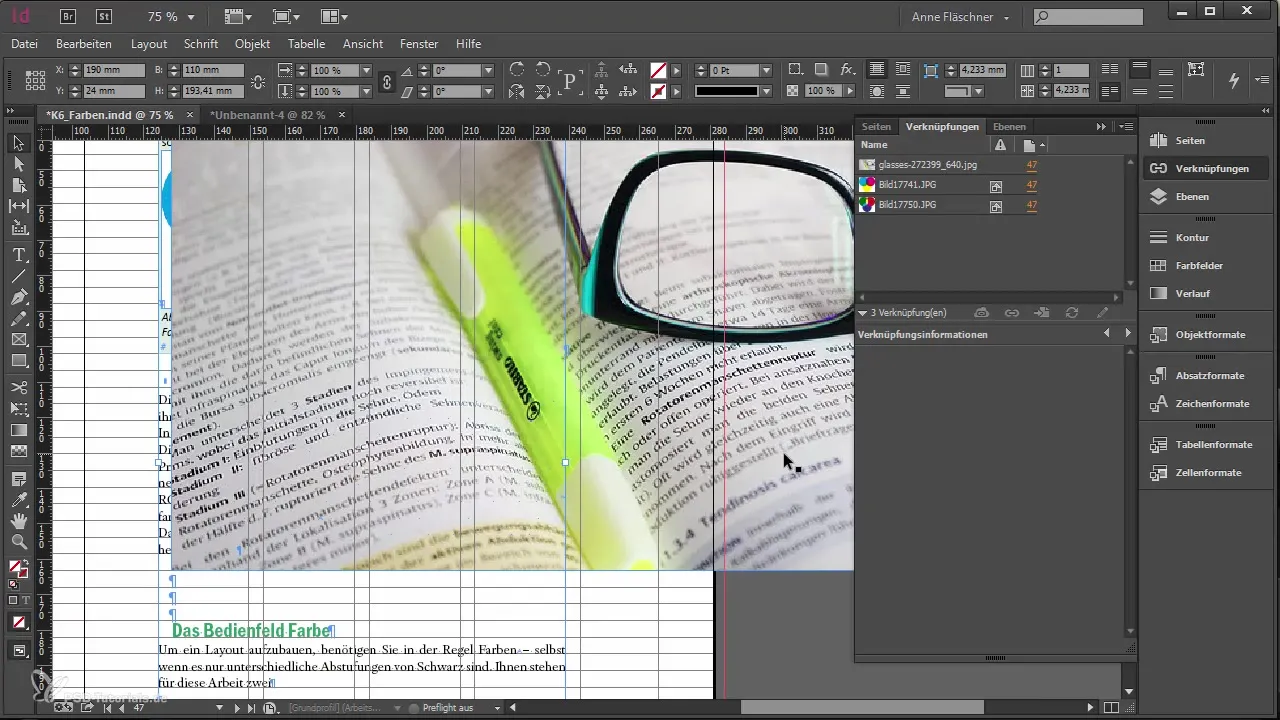
Summary – Effectively Managing Graphics and Images in Adobe InDesign
Working with images in Adobe InDesign requires a thoughtful approach to save storage space and ensure image quality for printing. Correctly importing, linking, and editing graphics leads to a superior end product. By properly utilizing the features in InDesign, you can design your projects efficiently and professionally.
Frequently Asked Questions
How do I import images into InDesign?Images can be inserted into your document via the "File" > "Place" menu.
How do I manage image links in InDesign?You can monitor and manage all image links through the Links panel.
How can I adjust the image size without losing proportions?Hold down the Shift key while resizing the image or frame.
What is the best format for print images?For printing, effective PPI should ideally be around 300.
How can I edit images in InDesign?Images can be opened and edited directly in the graphics program used through the "Edit Original" option.
